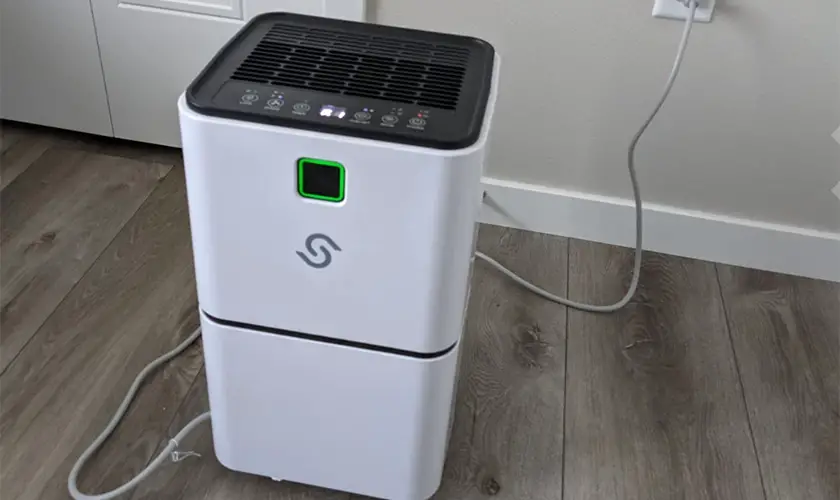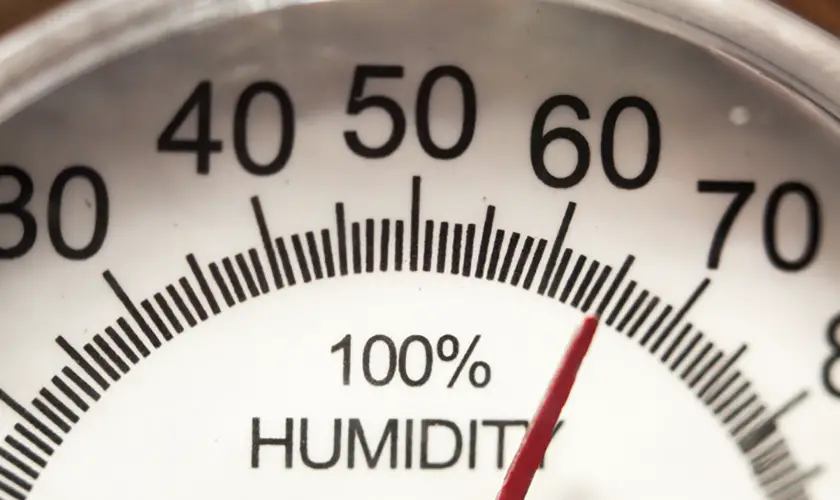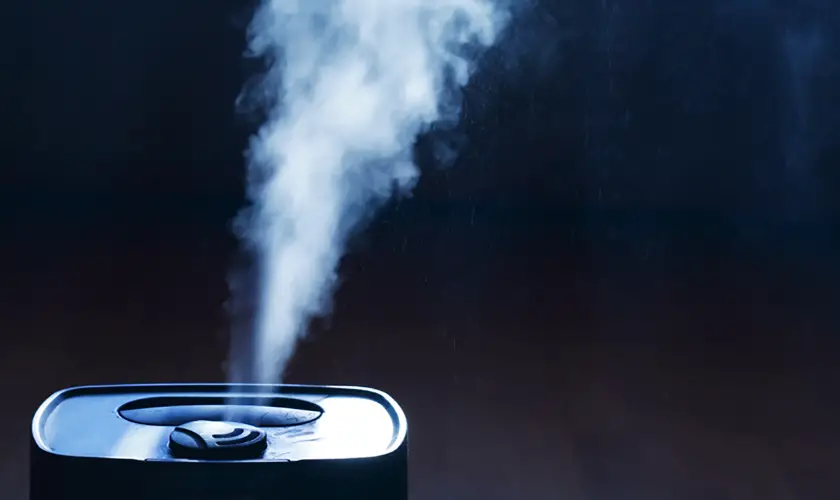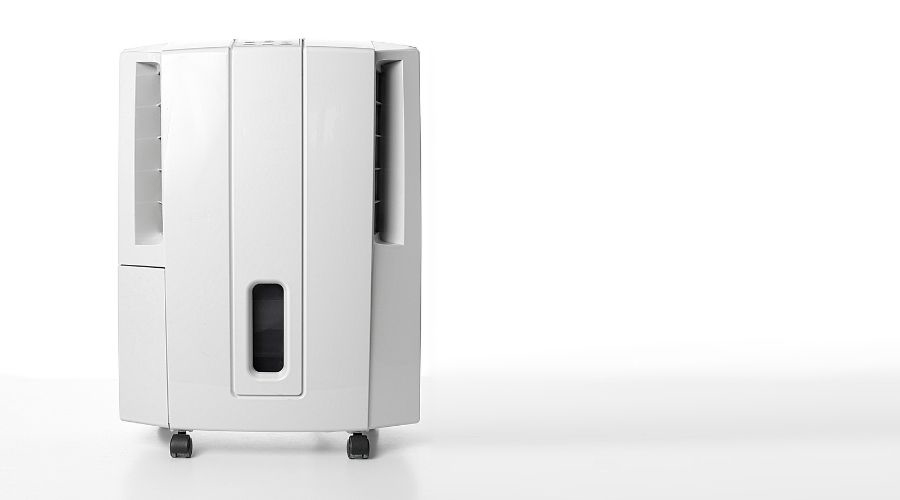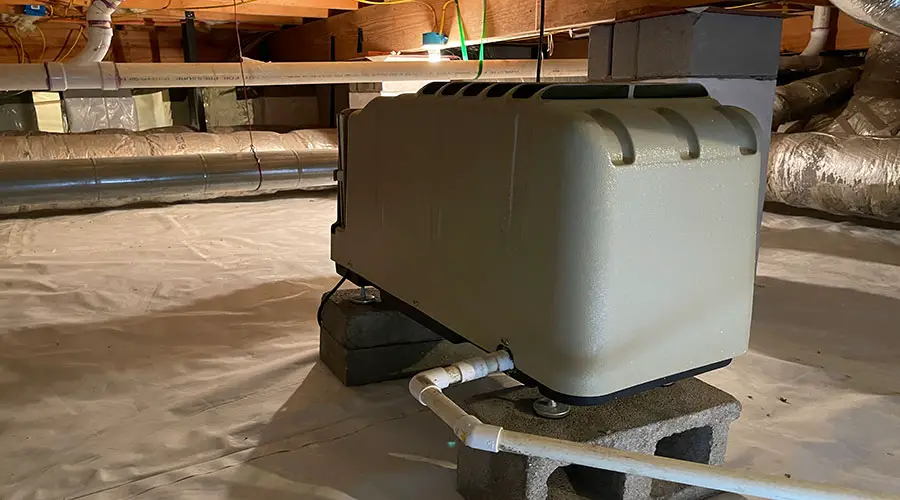
There are many possible reasons for damping your crawl space, from excess moisture to underlying plumbing issues. You’ll need to dry it out to avoid the potential dangers of a damp crawl space. If you’re wondering whether you can use a dehumidifier to dry out a crawl space, then we’ve got the answers you’re looking for!
Generally, a dehumidifier set to 45% to 55% can dry out a crawl space in 8 to 10 hours, but a saturated crawl space may take several days to dry and for wood moisture content to regulate. The exact time to dry out the area depends on the size and moisture levels. You can use a dehumidifier to effectively dry out your crawl space after you’ve removed all debris and outstanding water.
This article explains everything you need to know about drying out a wet crawl space with a dehumidifier. We’ll look at the process of using a dehumidifier to dry out a crawl space and the long-term benefits of installing one. Once we’ve done that, we’ll give you a few final tips on keeping your crawl space dry.
How to Dry a Crawl Space with a Dehumidifier
In many ways, dehumidifiers are the perfect solution to the moisture-related issues resulting from a wet crawl space. In this section, we’ll look at how you can use a dehumidifier to dry out your home’s crawl space. Once we’ve done this, we’ll look at the long-term benefits of installing a dehumidifier in your crawl space.
When it comes down to drying out your crawl space, there are a few basic steps to follow to ensure that you fully dry it. To do this, you can use a dehumidifier – and we’ll explain how. Let’s take a look!
1. Remove Any Wet Debris from the Crawl Space
Whether your crawl space is damp or flat-out wet, you should inspect the area for any wet debris. You’ll need to remove all debris before using a dehumidifier to dry out the crawl space. While doing this, you shouldn’t forget about checking any insulation.
Damp insulation must be removed and replaced to dry the crawl space thoroughly. The excess moisture will remain and worsen over time by not entirely removing all the wet debris and junk in the crawl space.
2. Remove Standing Water from the Crawl Space
Once you’ve cleared out any wet debris and insulation from the crawl space, it’s time to remove any standing water. If your crawl space is only damp, you likely don’t have to worry about this step and can move forward.
The most effective way to remove any standing water from a crawl space would be to use a sump pump, which can be purchased online or at your local hardware store. Here’s a handy video on removing standing water from a crawl space using one of these pumps!
3. Dry Your Crawl Space with a Dehumidifier
Finally, once you’ve removed any standing water and debris from your crawl space, a dehumidifier will help you dry it thoroughly. If you do not own one, it is possible to rent one. Unfortunately, there is no golden rule regarding how long a dehumidifier takes to dry a home’s crawl space!
How long the dehumidifier takes will ultimately depend on the size of the device itself, the size of your crawl space, how your crawl space’s ventilation is linked to the rest of your home, and, of course, how much moisture is in the air.
A wet crawl space will take an estimated eight to ten hours to dry using only a dehumidifier. You should set your dehumidifier between 30% and 45% and let it run until the crawl space is sufficiently dry.
The Advantages of Installing a Dehumidifier in a Crawl Space
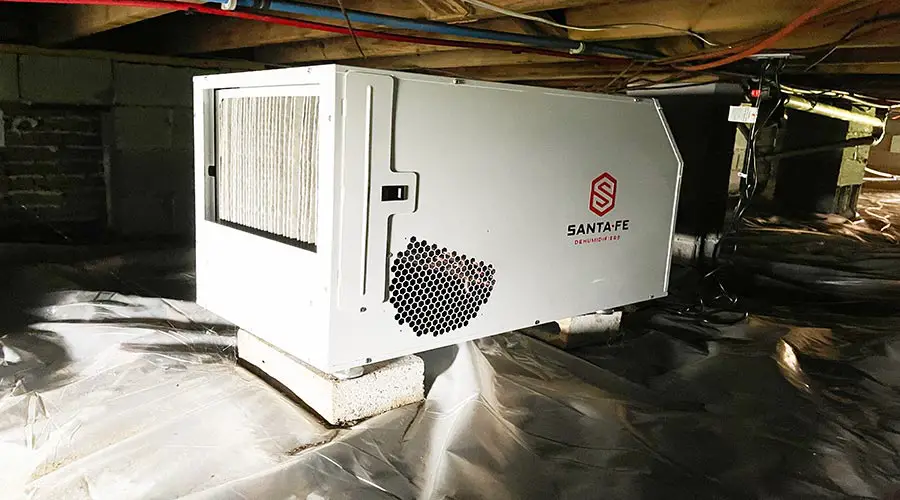
Did you know that dehumidifiers could be a long-term solution to damp crawl spaces and their associated issues? For between $800 and $1400, you can permanently install a crawl space dehumidifier to combat excess moisture.
Below are some of the biggest advantages of installing a crawl space dehumidifier:
- It improves the air quality in your crawl space
- Lowers humidity levels to prevent mold
- It helps to protect your home against pests
- It helps avoid any structural damage from moisture
- It is more energy efficient
In the following few sections, I’ll take a much deeper look at all the benefits you can get from installing a dehumidifier in a crawl space. Keep reading as we look at the long-term benefits of installing a dehumidifier in your home’s crawl space!
1. It Improves Your Overall Air Quality
When you invest in a permanent dehumidifier for your crawl space, you invest in better air quality for your home! Earlier in this article, we explained the health-related issues that could stem from a damp crawl space. When mold and mildew form in your crawl space, it is possible for spores to filter back into your home.
A permanent dehumidifier will prevent mold and mildew from forming, so your air quality will remain satisfactory. Furthermore, those who suffer from allergies and respiratory issues will likely see an improvement in their symptoms while at home.
2. It Lowers Overall Humidity Levels
A crawl space can impact the overall humidity levels in your home. Many homeowners overly rely on their air conditioning units to remove humidity from their homes without tackling the underlying issue of a damp crawl space.
When you install a dehumidifier in your crawl space, you’ll be able to control the humidity in your home more easily. Ultimately, lower humidity levels mean that you’ll feel more comfortable when you’re at home!
3. It Helps Protect Your Home Against Pests
As mentioned earlier, a damp crawl space can be the perfect breeding ground for various pests. While these infestations may start in your crawl space, they won’t stay contained to it. After all, it is connected to your home through the ventilation system.
In turn, the infestation of these pests can become a costly issue. You can prevent pest infestations by installing a dehumidifier in your crawl space. This can save you money and a headache somewhere down the line!
4. It Improves Structural Integrity
Earlier, we mentioned that mold has the tenacity to grow on wood and could affect your overall structural integrity. However, when the humidity levels in your crawl space exceed 70%, condensation can form and worsen the situation even further.
When condensation forms on wood, it can lead to wood rot. When left untreated, this can severely decrease the structural integrity of your home. You can help prevent condensation from forming by installing a dehumidifier!
5. It’s More Energy Efficient
Finally, a dehumidifier will help you become more energy efficient. As discussed earlier in this article, many people are unaware of a damp crawl space’s effect on their energy bills.
Installing a dehumidifier in your home’s crawl space effectively reduces your energy bill and becomes more energy-efficient overall. One thing is sure: it’ll do more than turn a light off!
The Negative Effects of a Damp Crawl Space
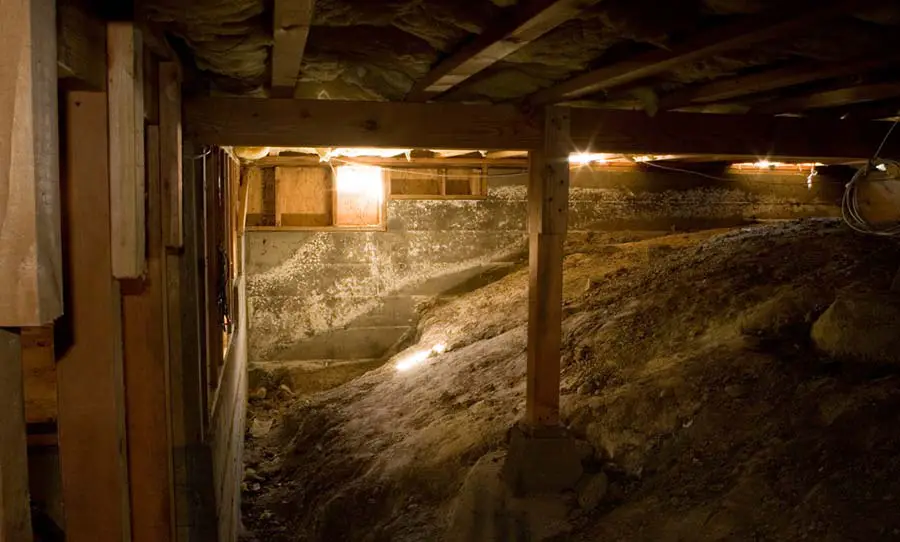
Before we look at how you can dry your crawl space using a dehumidifier, let’s briefly examine the effects a damp crawl space can have on your home! You might not even know the potential dangers of a wet crawl space.
1. Your Energy Bill is Higher
Homes with crawl spaces are known to have higher energy bills. This is even more true during the winter months! Crawl space humidity is often a culprit behind higher-than-usual energy bills – and many homeowners aren’t even aware of it.
Your crawl space doesn’t seem very significant. Often, homeowners are unaware of a seemingly insignificant crawl space’s impact on their monthly energy bill. For this reason, few people deal with the underlying issue behind their higher energy bill, resigning themselves to paying the higher tariff.
2. You Risk the Growth of Mold
When your crawl space is wet, excess moisture will be present in the air. Your home’s crawl space becomes the perfect breeding ground for mold and mildew. When left untreated, this could even result in a possible health hazard.
Furthermore, mold can quickly spread to grow on wood and other organic materials. This means the mold in your crawl space could spread to wooden parts of your home’s structure. In turn, this could undermine the structural stability of your home.
Your health could even be affected by the growth of mold and mildew. Your crawl space is linked to your home’s venting system. This means that it is possible for harmful spores to filter into the air you breathe. Those with allergies and respiratory problems are more susceptible to this.
3. You Risk a Pest Infestation
Pests are another common issue linked to a damp crawl space. Pests like dust mites thrive in humid environments, much like that of a wet crawl space. When these humid, moist conditions persist, you’re more likely to develop an infestation of pests.
Pests like dust mites, termites, rats, mice, spiders, and snakes are fond of damp crawl spaces. Furthermore, a pest infestation could even feed the mold formed due to the excess moisture in the air. That is why it’s crucial to promptly and effectively deal with a damp crawl space.
4. You Risk a Foul Odor
A foul odor might not sound that bad right now. However, when you can’t stop smelling it, you’ll wish you had dealt with it sooner! When a foul odor stems from your crawl space, it is also typically linked to mold growth and damp conditions.
It’s not just an odor! Crawl spaces are often linked to home ventilation systems. This means that once the air from the crawl space circulates back into your home, you risk ingesting these mold spores and various harmful bacteria.
How to Keep Your Crawl Space Dry Going Forward
Once you’ve successfully dried your crawl space, you’ll want to keep it that way! Of course, using a dehumidifier is one of the ways you can do this. However, there are a few more tips and tricks you should know about.
Keep reading as we break down the best methods to keep your crawl space dry in the long run!
1. Replace Wet Insulation
We briefly mentioned this point earlier when looking at the process of drying out a home’s crawl space. This step is crucial – and one many people forget. As we discussed earlier, removing wet debris from a crawl space but not removing wet insulation nullifies your efforts in drying out the crawl space.
When you don’t replace wet insulation, a dehumidifier will only be helpful to a point. Ultimately, damp insulation needs replacing to fully dry out the crawl space and deal with any issues.
2. Repair Underlying Issues
You must deal with any underlying issues when dealing with a damp crawl space. If you had to pump standing water out of your crawl space, you must determine where the water came from.
You’ll want to fix any cracks, leaks, or plumbing issues that may be linked to your wet crawl space. Furthermore, you may want to consider insulating your water pipes – this is another method to prevent condensation from forming in your crawl space.
3. Inspect Downspouts and Gutters
Downspouts and damaged gutters may be the culprit behind your wet crawl space. Inspecting exterior plumbing is just as important as fixing the issues you find inside the house. It would be best if you inspected to ensure that downspouts and gutters channel water away from your crawl space.
4. Encapsulate Your Crawl Space
Besides installing a dehumidifier, encapsulating your crawl space is one of the most effective ways to keep moisture out of your crawl space. Crawl space encapsulation is a process whereby a vapor barrier is installed, which acts as a seal against moisture.
Depending on the size of your crawl space, encapsulation can cost anywhere between $1500 and $15,000. On average, however, you’re looking at around $5000. Of course, a dehumidifier is a cheaper solution. However, encapsulation may be necessary to deal with a permanently wet crawl space in extreme cases.
To encapsulate your crawl space, you’ll need to book an inspection. Once your crawl space has been inspected, you’ll get a quote for the encapsulation process. Before you can do this, you must remove any debris and perform any necessary repairs.
5. Install a Dehumidifier
Finally, one of the best ways to keep your crawl space dry in the long run is to install a dehumidifier – but you knew that!
Conclusion
This article looked at how you can use a dehumidifier to dry out your home’s crawl space. A dehumidifier can be permanently installed in your crawl space as a long-term solution to dealing with excess moisture in the air and its associated problems.


